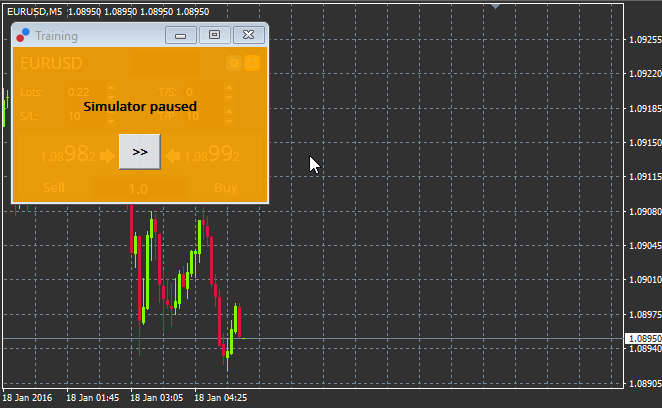
You may be asking, "What are the best stocks to buy with $500?" You might be asking yourself, "What stocks are the best to buy with $500?" There are many great options available to you, including a low-cost diversification plan, dividend reinvestment, diversification, and S&P500 stocks. You will also find some tips on investing with a restricted budget. Once you read this article, it will become clear which stocks are best to purchase starting at $500.
S&P 500 stocks
It's tempting to put a little money into the hottest companies. But buying stock is much more difficult. It takes more than a few dollars to double your investment. It is important to invest in well-established companies. However, you can still buy stocks with just $500. Here are some of the best stocks to buy with $500:
Stocks in the S&P 500: These stocks could be outperformers next years. These stocks, once considered stellar, can now be bought at a substantial discount. Below, you'll find the worst performing S&P 500 stocks. Stocks can be bought in small caps or internationally. And remember to diversify your portfolio! It's not enough to invest only in the S&P 500.

Dividend reinvestment plan
Dividend-reinvestment plans can be a great way add discipline to investing and generate additional income. Many brokerages offer this plan and will waive certain fees for certain applicants. This method has its downsides. It is worth considering if you are just beginning and wish to increase your portfolio by at least a few hundred bucks each year.
A dividend reinvestment plan, unlike a traditional mutual fund is not the best option for Wall Street traders looking to make quick money. These plans are best for investors with a long-term investment goal. Dividend reinvestment allows you to accumulate shares while not having to pay cash. And they won't deplete your savings. AT&T was a great example of a stock which has high dividend growth. They were sold for $29 back in 2011.
Low costs
You don't need to have a million dollars to invest in low-expense ratio stocks. The key is to choose an investment strategy that suits your budget. Index funds are the best investments for new investors, as they offer low expenses and broad market exposure. These funds have their disadvantages, however. These are the top stocks that investors with limited budgets can choose to start their portfolios at a low cost.
Be sure to first check the expense ratio. It should be below the average. Do not let the expense ratio determine your decision. For example, an ETF with a high expense rate can cause you to lose $5 on a $10,000 investment. Even if you only have $500, an index fund with a low cost ratio is not a good choice.

Diversification
To minimize the risk of losing your entire portfolio in a market downturn, many smart money managers recommend diversifying your investments. Recent stock market drops show how risky putting all your eggs in one basket. Diversification involves investing in multiple types, including stocks, bonds, international securities, cash and even cash equivalents. These are some tips for diversifying your investments using just $500
Diversification, as its name implies, spreads risk across a portfolio. While diversification will reduce your risk in certain stocks or asset classes, it won't protect you against an overall rise in rates. You can't afford to bet all your eggs in one basket. You might be lucky enough to invest in some of the most lucrative investments today only to discover that they are a bust tomorrow.
FAQ
Do I invest in individual stocks or mutual funds?
Mutual funds are great ways to diversify your portfolio.
They may not be suitable for everyone.
If you are looking to make quick money, don't invest.
You should instead choose individual stocks.
Individual stocks give you greater control of your investments.
Online index funds are also available at a low cost. These funds let you track different markets and don't require high fees.
Do I really need an IRA
An Individual Retirement Account (IRA), is a retirement plan that allows you tax-free savings.
You can make after-tax contributions to an IRA so that you can increase your wealth. They offer tax relief on any money that you withdraw in the future.
IRAs can be particularly helpful to those who are self employed or work for small firms.
In addition, many employers offer their employees matching contributions to their own accounts. Employers that offer matching contributions will help you save twice as money.
How long does it take to become financially independent?
It all depends on many factors. Some people become financially independent overnight. Some people take years to achieve that goal. It doesn't matter how much time it takes, there will be a point when you can say, “I am financially secure.”
It is important to work towards your goal each day until you reach it.
What kind of investment vehicle should I use?
Two main options are available for investing: bonds and stocks.
Stocks represent ownership stakes in companies. Stocks have higher returns than bonds that pay out interest every month.
Stocks are a great way to quickly build wealth.
Bonds offer lower yields, but are safer investments.
Keep in mind, there are other types as well.
These include real estate, precious metals and art, as well as collectibles and private businesses.
What kind of investment gives the best return?
The truth is that it doesn't really matter what you think. It all depends on how risky you are willing to take. You can imagine that if you invested $1000 today, and expected a 10% annual rate, then $1100 would be available after one year. If you instead invested $100,000 today and expected a 20% annual rate of return (which is very risky), you would have $200,000 after five years.
In general, there is more risk when the return is higher.
So, it is safer to invest in low risk investments such as bank accounts or CDs.
However, you will likely see lower returns.
High-risk investments, on the other hand can yield large gains.
You could make a profit of 100% by investing all your savings in stocks. However, it also means losing everything if the stock market crashes.
Which is the best?
It all depends what your goals are.
For example, if you plan to retire in 30 years and need to save up for retirement, it makes sense to put away some money now so you don't run out of money later.
But if you're looking to build wealth over time, it might make more sense to invest in high-risk investments because they can help you reach your long-term goals faster.
Be aware that riskier investments often yield greater potential rewards.
But there's no guarantee that you'll be able to achieve those rewards.
What should I invest in to make money grow?
You need to have an idea of what you are going to do with the money. It is impossible to expect to make any money if you don't know your purpose.
You should also be able to generate income from multiple sources. In this way, if one source fails to produce income, the other can.
Money doesn't just magically appear in your life. It takes hard work and planning. Plan ahead to reap the benefits later.
Statistics
- As a general rule of thumb, you want to aim to invest a total of 10% to 15% of your income each year for retirement — your employer match counts toward that goal. (nerdwallet.com)
- If your stock drops 10% below its purchase price, you have the opportunity to sell that stock to someone else and still retain 90% of your risk capital. (investopedia.com)
- Most banks offer CDs at a return of less than 2% per year, which is not even enough to keep up with inflation. (ruleoneinvesting.com)
- An important note to remember is that a bond may only net you a 3% return on your money over multiple years. (ruleoneinvesting.com)
External Links
How To
How to Save Money Properly To Retire Early
Retirement planning is when your finances are set up to enable you to live comfortably once you have retired. It is the time you plan how much money to save up for retirement (usually 65). You should also consider how much you want to spend during retirement. This includes things like travel, hobbies, and health care costs.
You don't need to do everything. Financial experts can help you determine the best savings strategy for you. They will assess your goals and your current circumstances to help you determine the best savings strategy for you.
There are two types of retirement plans. Traditional and Roth. Roth plans allow for you to save post-tax money, while traditional retirement plans rely on pre-tax dollars. The choice depends on whether you prefer higher taxes now or lower taxes later.
Traditional Retirement Plans
A traditional IRA lets you contribute pretax income to the plan. You can make contributions up to the age of 59 1/2 if your younger than 50. After that, you must start withdrawing funds if you want to keep contributing. After turning 70 1/2, the account is closed to you.
If you've already started saving, you might be eligible for a pension. These pensions can vary depending on your location. Many employers offer matching programs where employees contribute dollar for dollar. Other employers offer defined benefit programs that guarantee a fixed amount of monthly payments.
Roth Retirement Plans
Roth IRAs are tax-free. You pay taxes before you put money in the account. Once you reach retirement, you can then withdraw your earnings tax-free. There are however some restrictions. However, withdrawals cannot be made for medical reasons.
A 401 (k) plan is another type of retirement program. These benefits are often offered by employers through payroll deductions. Employees typically get extra benefits such as employer match programs.
401(k), Plans
Many employers offer 401k plans. They allow you to put money into an account managed and maintained by your company. Your employer will automatically contribute a portion of every paycheck.
Your money will increase over time and you can decide how it is distributed at retirement. Many people prefer to take their entire sum at once. Others spread out their distributions throughout their lives.
You can also open other savings accounts
Some companies offer additional types of savings accounts. TD Ameritrade has a ShareBuilder Account. You can also invest in ETFs, mutual fund, stocks, and other assets with this account. You can also earn interest on all balances.
Ally Bank has a MySavings Account. You can deposit cash and checks as well as debit cards, credit cards and bank cards through this account. You can also transfer money from one account to another or add funds from outside.
What to do next
Once you have a clear idea of which type is most suitable for you, it's now time to invest! First, choose a reputable company to invest. Ask family members and friends for their experience with recommended firms. You can also find information on companies by looking at online reviews.
Next, calculate how much money you should save. Next, calculate your net worth. Your net worth includes assets such your home, investments, or retirement accounts. It also includes debts such as those owed to creditors.
Once you know your net worth, divide it by 25. That number represents the amount you need to save every month from achieving your goal.
For instance, if you have $100,000 in net worth and want to retire at 65 when you are 65, you need to save $4,000 per year.